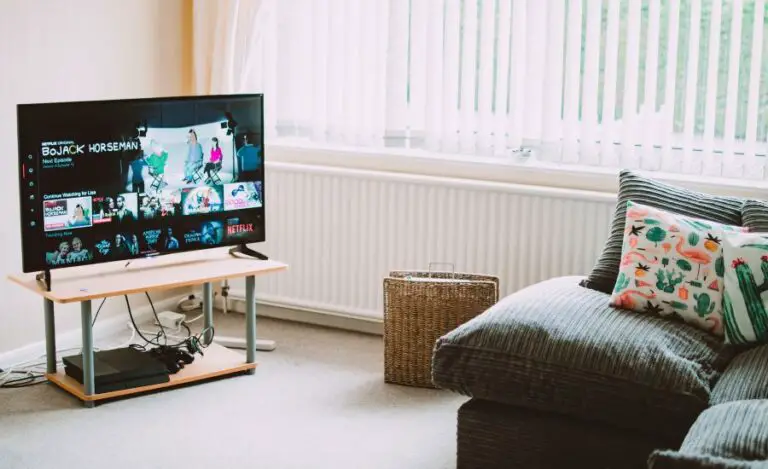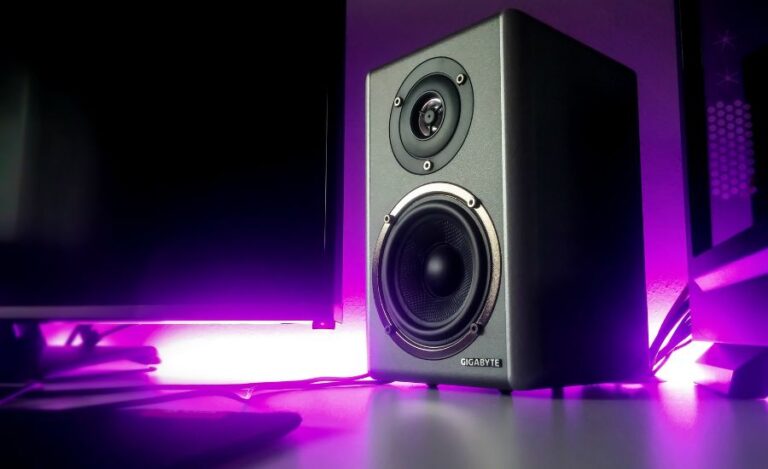In-Wall Vs. In-Ceiling Speaker – Pros & Cons
Both in-wall and in-ceiling speakers are excellent options for improving surround sound capabilities. They provide you the ability to create a singular, room-flooding immersive experience in a single room or even in several spaces. However, after knowing what they cost, you might ask yourself which option—in-ceiling vs. in-wall—is preferable. Also, what would provide you with the most value. Let’s find out!
Compact and reasonably priced in-ceiling speakers are your budget-firendly options. On the other hand, larger and more potent in-wall speakers are comparatively expensive.
When choosing between the two, first consider the price. Then, it’s important for you to know how they differ from one another, what advantages they provide, and how to use them most effectively.
If you’re still confused, no worries! I’m here to help you out. Let’s dig in…
Which one to pick: In-Wall or In-Ceiling Speakers?
There are several fundamental similarities between in-ceiling and in-wall speakers. These speakers differ from one another for a variety of reasons, though. As a result, many customers find it difficult to select the best kind of speaker for their unique requirements.
Although both types are positioned within flat surfaces, the location of the speakers is a key differentiator in this case. In-wall speakers are meant to be front-firing. On the other hand, in-ceilings are fixed downward and fire sound upward.
Of course, there are other major differences too. For instance, in-wall speakers are frequently bigger than the other type. However, in-ceiling speakers are often less expensive and more compact than their in-wall counterparts.
Now, if you’re clueless about how these variations impact the sound quality that each type of speaker produces, keep scrolling….
It’s critical to weigh the benefits and drawbacks of each speaker type when determining which is ideal for you. This will enable you to select the one that best suits your requirements and budget.
Let me outline each speaker’s benefits in the two parts that follow. This will also make certain shortcomings of each one clear. You may choose what’s best for your house by weighing these advantages and disadvantages!
In-Ceiling Speakers: Pros & Cons
The majority of in-ceiling speakers are designed to fit neatly into your ceiling and have a circular shape.
Ceiling speakers may be utilized in a single room or several rooms. They may be used to produce a sound that moves easily around several rooms, such as the background music at a large party. If you enjoy entertainment, you’ll appreciate the adaptable, subtle surround sound experience they both has to offer.
Pros
In-ceiling speakers won’t distract from the beauty of your space. But if you’re still concerned, you could always install them on the wall instead. They enhance audio sound and are hidden from your line of sight. Moreover, they are affordable.
You may have additional specific inquiries about the use of in-ceiling speakers.
- Sleek-looking: Your dedicated home theatre space, master bedroom, or outdoor entertainment area will all look great with in-ceiling speakers installed. Regardless of where they are, it will never fail to look good.
- Multi-Dimensional Sound: A more immersive music experience is produced by in-ceiling speakers, which raise the sound level. In-ceiling speakers give your sound more height. Yes, and it regardless of whether your audio arrangement uses a sound base, a sound bar, or a conventional receiver and surround sound configuration.
- Out-of-sight: In-ceiling speakers are a terrific choice since they provide dimension to your sound system. The best spot to hide them from view is the ceiling. Speakers are there to be heard, not to be observed.
Cons
Undoubtedly, in-ceilings do offer a ton of benefits. However, they also have a few drawbacks. First, it has a limited sound range. Secondly, you need to purchase a number of them to get that desired effect. Furthermore, they could have a-
- Narrow sound field: Compared to in-wall speakers, in-ceiling speakers are more compact. They have a smaller sound field than the bigger in-wall counterparts. It is because they are normally about 6.5 inches in size.
- Less Features: Most in-ceiling speakers are just for easy and casual listening. They lack additional features, when compared to in-wall speakers.
In-Wall Speakers: Pros & Cons
Rectangular speakers that can be installed inside your walls are known as in-wall speakers. They may be used as extra front and back speakers, or as your left and right speaker channels. Also, they could provide constant sound in several rooms.
Pros
The sound stage is wider and the positioning options are more flexible with in-wall speakers. They are excellent additions to all types of home entertainment systems. Furthermore, they have
- Excellent Sound quality: In-wall speakers provide greater space for additional sound technologies and features since they are bigger. As a result, they are usually more powerful and of greater quality compared to in-ceiling speakers.
You could even install in-wall speakers in more than one wall of your room or other indoor space. It will offer you more flexible sound qualities than just a downward-firing one.
- Placement Flexibility: Any wall is a great place for in-wall speakers. They may be high or low, in the front, the rear, or the sides of the room- it doesn’t matter.
Cons
Though they can be placed anywhere and help create a loud, and powerful sound, in-wall speakers are frequently tales up more space. also, they are-
- More Expensive: Single in-wall speakers can sometimes be more expensive than five to six in-ceiling speakers combined. But they can also be bought on sale online and in shops for a discounted price. You may benefit from the features of their added cost, but not everyone’s budget may allow for them.
- Bulky: The majority of in-ceiling speakers are 6.5 inches in size. Whereas in-wall speakers are minimum of 8 inches. Positioning becomes critical since they are bigger. You don’t want their size to distract from the mood in your room.
The locations where you may put them may be limited since you want to keep them sufficiently out of the way. It is so that they don’t draw too much attention. For smaller spaces, this could be difficult.
How Easily Can I Replace Them?
In many situations, in-ceiling and in-wall speakers can be used simultaneously. Although the holes’ sizes and shapes will change after installation, the two speakers’ overall tones are comparable due to their reversed positions.
You should be aware that you’ll likely receive the quality you paid for if you decide to mix and match in order to save money. So make sure that when you’re trying to decrease costs, you’re also taking into account your demands for overall quality.
Are in-wall and in-ceiling speakers the same?
Generally, in-ceiling speakers have been placed down-firing from the ceiling above. Whereas, in- and on-wall speakers are placed in front of the woofers directed straight across the room. So, they are not the same.
Do You Need Amplifiers For In-ceiling Speakers?
In-ceiling speakers generally require power to operate, and the need for amplifiers depends on the type of speakers you have. Passive in-ceiling speakers, which do not have built-in amplifiers, require an external amplifier to power them. The amplifier receives the audio signal from your source device, amplifies it, and sends it to the speakers. This setup is common when using a dedicated audio receiver or amplifier that powers the entire audio system, including the in-ceiling speakers.
On the other hand, powered or active in-ceiling speakers have built-in amplifiers, eliminating the need for a separate amplifier. These speakers can be connected directly to a source device or audio system, as they already have the amplification circuitry integrated into their housing.
So, whether you need amplifiers for in-ceiling speakers depends on whether they are passive or powered. Passive speakers require external amplification, while powered speakers have the amplifiers built-in.
Final Verdict: In-Wall vs In-Ceiling Speakers
In this article, I’ve tried my best to compare in-ceiling speakers with in-wall speakers in the most practical way possible. By now, you know each variety of speaker has a special set of advantages. In the end, your demands will determine the kind you would want.
In-ceiling speakers are a great option if you’re looking for an affordable approach to building a surround sound system. However, in-wall speakers are fantastic if you’re looking for strong speakers that can fill a large open area. If you wish, you can even mix and match the two. The preference is always yours!





